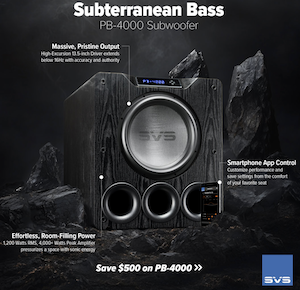Matthew J Poes
AV Addict
Thread Starter
- Joined
- Oct 18, 2017
- Posts
- 1,904
I know there is mention of processing methods that allow much lower noise floor than would otherwise be possible. I’ve never fully understood this as it pertains to actual noise elsewhere in the system. Does this approach allow for the meaningful measurement of information below the mics own noise floor? What about the rooms?
Let’s say my rooms estimated noisefloor is 25dbs at 1khz but rising in the Low frequencies to 40db at 100hz and below. Does that mean that with a 100db measurement that 40db is the noise floor limit or does this processing actually extend it farther? If so, by how much? Does it vary and if so is there a way to tell the actual measurement noisefloor of the system (rather than say the room).
Am I right to believe that we need to scale our graphs so that the noise floor is the lowest limit we would ever look at. That if it looks like 40db is the point at which we see an even amount of noise in the wsterfall, we make that the lower limit and assume everything below that has just decayed into noise?
Am I right to think that he absolute measurement level then would play a role in the accuracy of some of this stuff since sound will decay into noise quickly. What about distortion? If I measure at 75db then most of the distortion would be buried in the noise. How much of the signal processing is able to dig past the noise and how much is simply lost until you measure at a higher level. If a distortion component lies at -60db and the signal level and this fundamental was at 75db then the distortion component is at 15db. That is far below the noise floor of any room or any of the cheap mics we use. Does that mean you couldn’t accurately measure that? If so what does REW show? Higher distortion than really exists or no distortion?
When I took courses on this I was taught to treat the rooms noise floor as the absolute noise floor of the measurement but to set my measurement level so that the lowest thing I want to measure is 15db above that point. This also put limits on what we could directly measure as there was a limit on how loud we would want to measure. For example if we want to measure RT60 directly then the -60db point must be 15db above the rooms noise floor and thus the measurement level=60db+room noise floor+15db. If we have a noise floor of 40db, that’s 115 db measurement level. Many systems couldn’t even play that loud without distress or distortion. I know this is precisely why we don’t measure it directly and instead infer it from 20 or 30db of decay, but I’m trying to then apply this same logic to other inferences we make near the noise floor such as distortion, waterfall plots, etc.
Let’s say my rooms estimated noisefloor is 25dbs at 1khz but rising in the Low frequencies to 40db at 100hz and below. Does that mean that with a 100db measurement that 40db is the noise floor limit or does this processing actually extend it farther? If so, by how much? Does it vary and if so is there a way to tell the actual measurement noisefloor of the system (rather than say the room).
Am I right to believe that we need to scale our graphs so that the noise floor is the lowest limit we would ever look at. That if it looks like 40db is the point at which we see an even amount of noise in the wsterfall, we make that the lower limit and assume everything below that has just decayed into noise?
Am I right to think that he absolute measurement level then would play a role in the accuracy of some of this stuff since sound will decay into noise quickly. What about distortion? If I measure at 75db then most of the distortion would be buried in the noise. How much of the signal processing is able to dig past the noise and how much is simply lost until you measure at a higher level. If a distortion component lies at -60db and the signal level and this fundamental was at 75db then the distortion component is at 15db. That is far below the noise floor of any room or any of the cheap mics we use. Does that mean you couldn’t accurately measure that? If so what does REW show? Higher distortion than really exists or no distortion?
When I took courses on this I was taught to treat the rooms noise floor as the absolute noise floor of the measurement but to set my measurement level so that the lowest thing I want to measure is 15db above that point. This also put limits on what we could directly measure as there was a limit on how loud we would want to measure. For example if we want to measure RT60 directly then the -60db point must be 15db above the rooms noise floor and thus the measurement level=60db+room noise floor+15db. If we have a noise floor of 40db, that’s 115 db measurement level. Many systems couldn’t even play that loud without distress or distortion. I know this is precisely why we don’t measure it directly and instead infer it from 20 or 30db of decay, but I’m trying to then apply this same logic to other inferences we make near the noise floor such as distortion, waterfall plots, etc.












